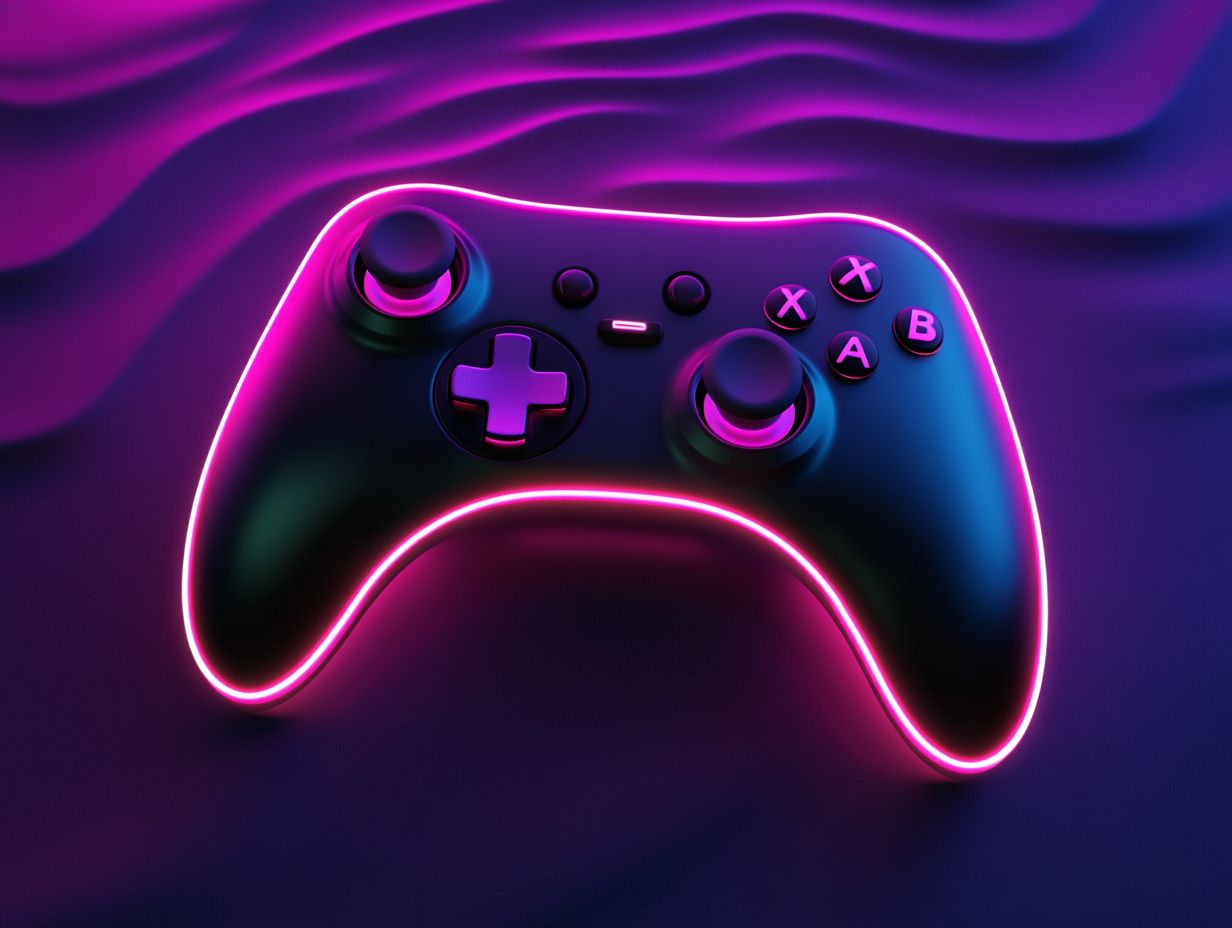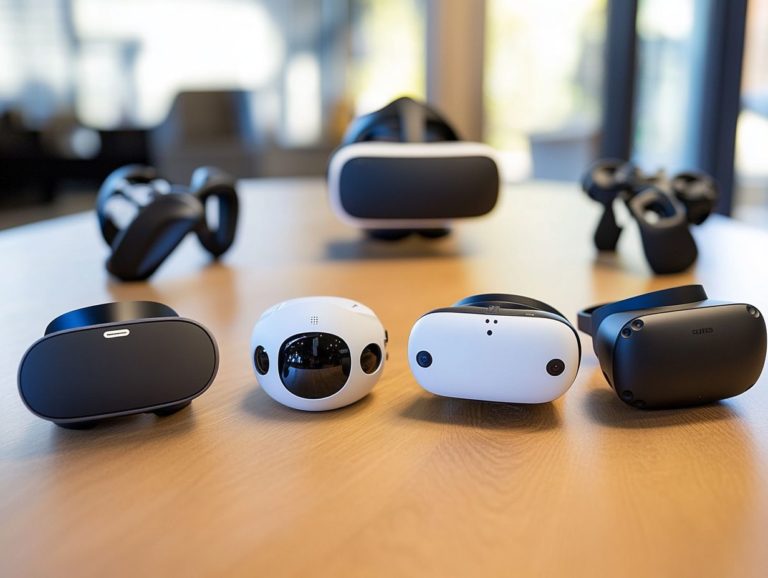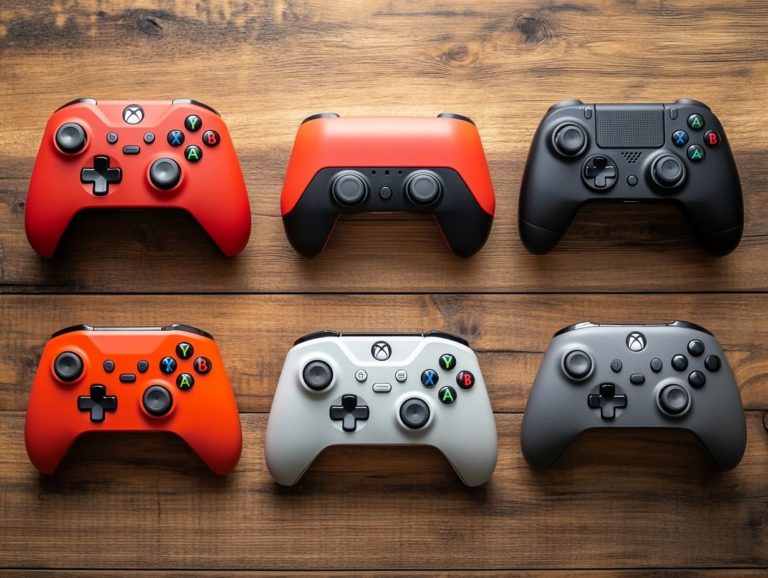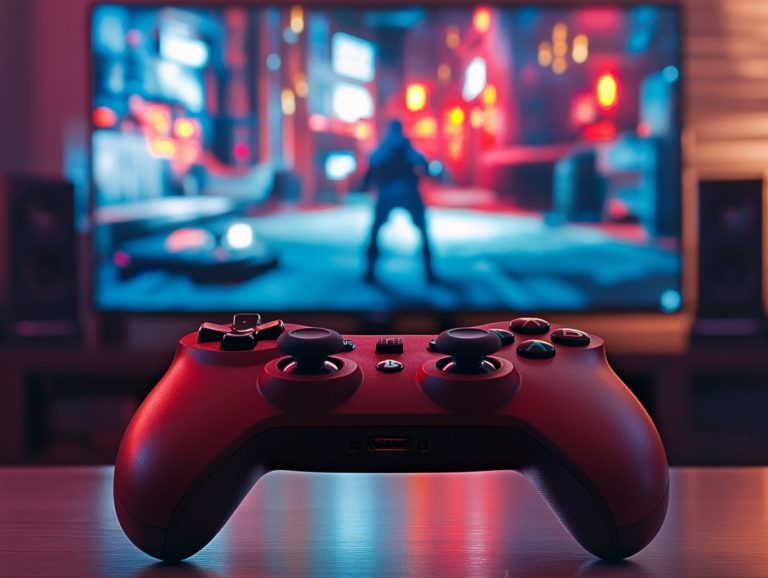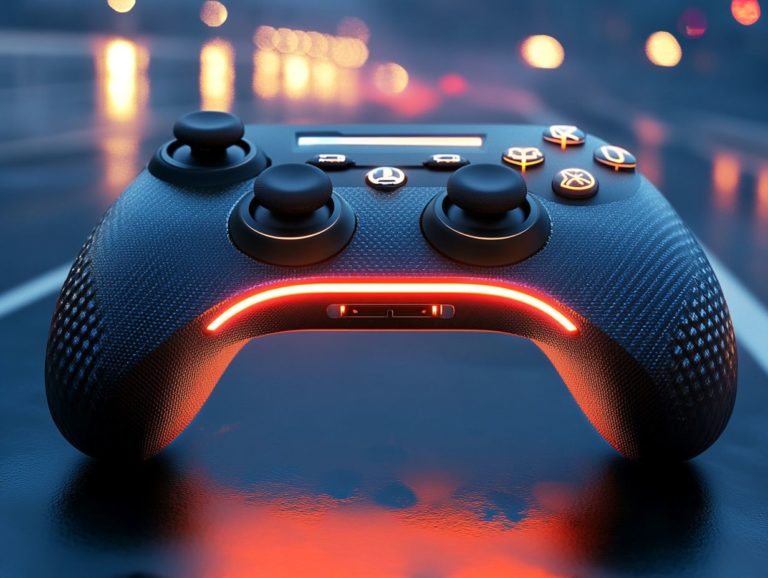the role of haptic feedback in gaming controllers
Haptic feedback has revolutionized your gaming experience, creating a seamless connection between virtual worlds and your physical sensations.
As gaming controllers have advanced, the integration of haptic technology has transformed the way you engage with your favorite titles. This has significantly enhanced both immersion and gameplay.
This article delves into the definition and function of haptic feedback, tracing its historical development and highlighting the various types that enrich your gaming experience.
You ll also learn about the challenges in its implementation and get a glimpse into the future of haptic technology in gaming.
Dive in to uncover how these advancements are reshaping the way you play!
Contents
- Understanding Haptic Feedback
- The Evolution of Gaming Controllers
- Benefits of Haptic Feedback in Gaming
- Types of Haptic Feedback in Gaming Controllers
- How Haptic Feedback is Implemented in Gaming Controllers
- Limitations and Challenges of Haptic Feedback in Gaming
- Addressing Potential Issues
- The Future of Haptic Feedback in Gaming Controllers
- Frequently Asked Questions
- Curious about haptic feedback? Here s what you need to know!
- What is the role of haptic feedback in gaming controllers?
- How does haptic feedback work in gaming controllers?
- What are the benefits of haptic feedback in gaming controllers?
- Can haptic feedback in gaming controllers improve gameplay?
- Are there different types of haptic feedback in gaming controllers?
- Do all gaming controllers have haptic feedback?
Key Takeaways:
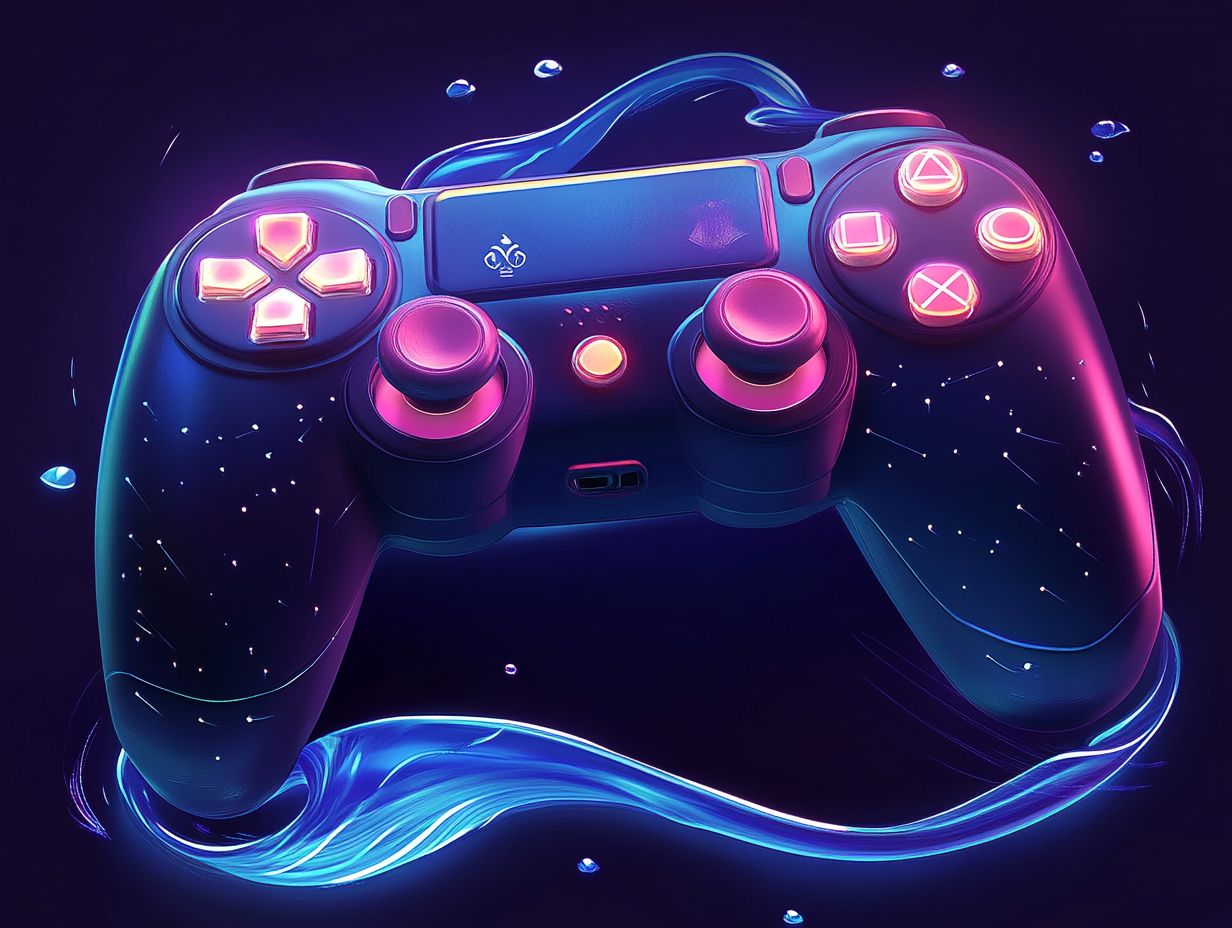
- Haptic feedback enhances immersion and gameplay experience in gaming controllers.
- It involves various types of feedback, such as rumble and force feedback, implemented through advanced vibration technology.
- While there are limitations and challenges, the future of haptic feedback in gaming controllers looks promising with predicted advancements.
Understanding Haptic Feedback
Haptic feedback plays a pivotal role in modern gaming, making your experience feel more real by delivering tactile sensations that replicate physical interactions.
This technology has transformed from simple vibrations into advanced vibration technology, now an essential feature in gaming controllers like the PlayStation 5’s DualSense and Nintendo’s Joy-Cons.
As game developers increasingly integrate haptic technology into their creations, it’s crucial for you to grasp its definition and function within the video game industry.
Definition and Function
Haptic feedback uses touch-based interactions to communicate vital information, enhancing your overall experience in digital realms.
This technology uses vibrations, motions, or various tactile sensations to mimic real-world encounters. Imagine feeling the impact of collisions, the thrill of explosions, or the subtle movement of objects in a game it’s all made possible through haptic feedback.
Consider gaming consoles like the PlayStation and Xbox. Their controllers come equipped with motors that deliver different levels of feedback based on the game scenario, making each moment feel unique.
In virtual reality, gloves or handheld devices integrate haptic feedback to create a more immersive experience. They replicate touch sensations, making your interactions feel genuinely realistic and engaging.
Whether you re navigating a fast-paced shooter or exploring expansive virtual landscapes, those tactile responses are essential for amplifying both gameplay and emotional immersion.
The Evolution of Gaming Controllers
The evolution of gaming controllers has fundamentally transformed your gaming experience, evolving from basic input devices into sophisticated tools packed with haptic feedback and cutting-edge technology.
Check out how this innovation changes your gaming experience with the PlayStation 5’s DualSense controller and Microsoft’s Xbox Series X/S controllers. Both boast features designed to elevate player engagement and interactivity.
This advancement has been crucial for console manufacturers striving to excel in the fiercely competitive video game market.
From Basic Controllers to Haptic Feedback
The shift from basic controllers to those equipped with haptic feedback marks a significant milestone in interactive gaming, taking your immersion to extraordinary heights.
This evolution traces back to the early days of gaming, when simplistic designs featuring basic buttons and joysticks offered minimal interaction. As technology progressed, iconic controllers like the Nintendo 64 introduced analog sticks, enhancing your experience with smoother movements and better control.
Fast forward to today, and the PlayStation 5’s DualSense controller embodies this transformation with its advanced haptic technology. It delivers a range of sensations, from the gentle patter of raindrops to the tension felt while racing on a track.
These innovations not only captivate you as a player but also fundamentally alter how you engage with virtual worlds, making each moment in-game feel more tactile and real.
Don t miss out on how these advancements are revolutionizing the way you play!
Benefits of Haptic Feedback in Gaming
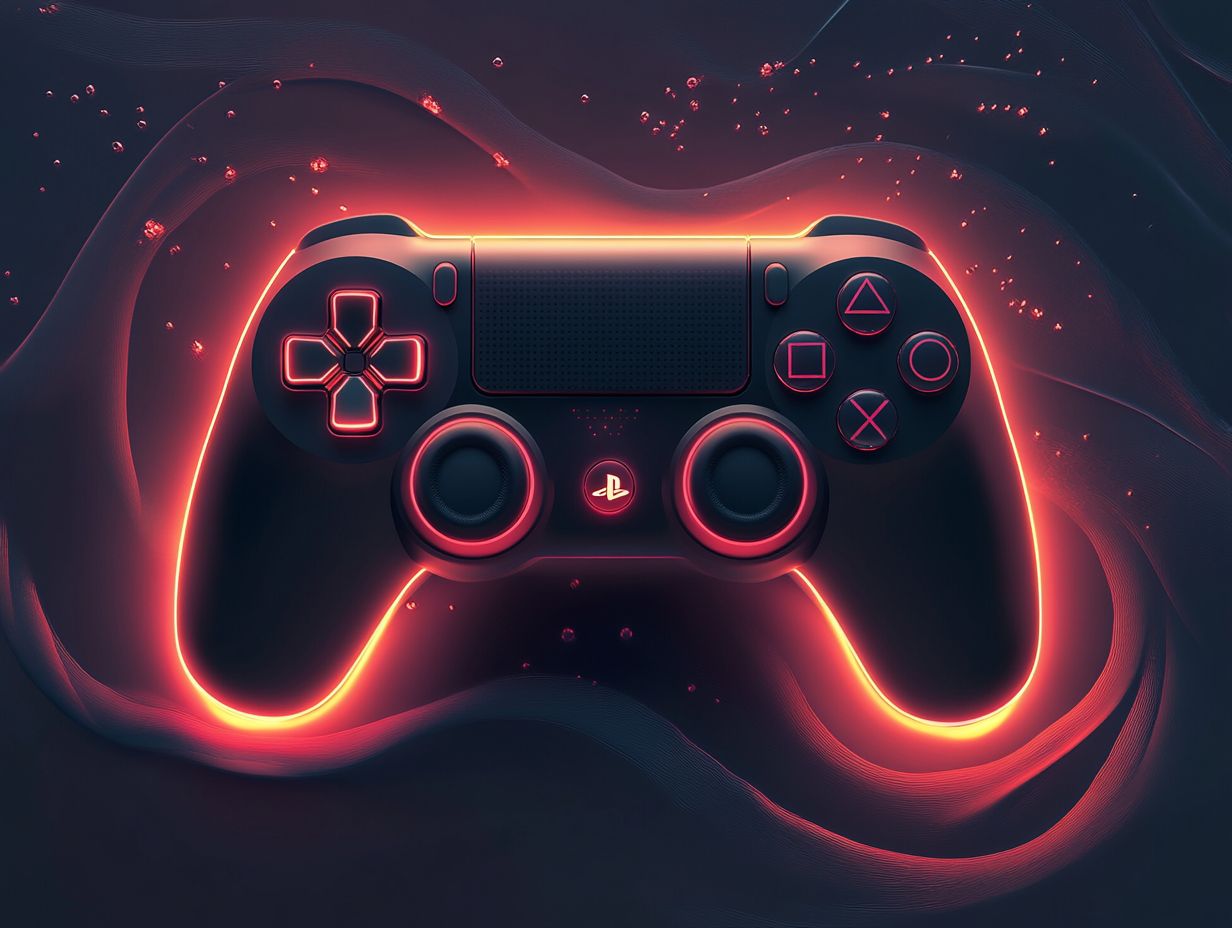
Haptic feedback offers many benefits in gaming. It boosts immersion and enhances your overall experience with realistic sensations.
By integrating advanced haptic technology, game developers can create deeper emotional engagement and interaction with virtual objects. Whether you re playing on a console or navigating mobile platforms, this technology reshapes how you connect with your games.
Enhancing Immersion and Gameplay
Haptic feedback immerses you in realistic physical sensations that align with in-game actions. This technology includes forms like feedback through electrical stimulation and force feedback, allowing you to feel every detail from the vibrations of footsteps on varied surfaces to the shockwaves of a virtual explosion.
For example, in “Resident Evil 7,” the haptic feedback amplifies suspense and lets you feel the environment’s tension, sensing the tremors as danger approaches.
In racing simulations like “Gran Turismo Sport,” the force feedback in the steering wheel gives you a tangible sense of the road texture, enhancing your racing experience.
Types of Haptic Feedback in Gaming Controllers
In gaming controllers, you ll find various haptic feedback types, including rumble and force feedback. Each element plays a distinct role in enhancing your sensory experience during gameplay.
Rumble, Force Feedback, and More
Rumble and force feedback are essential types of haptic sensations that elevate your gaming experience. They simulate tangible responses to your in-game actions.
Modern gaming controllers, like the PlayStation DualSense and Xbox Series X controller, feature advanced mechanisms that adjust vibrations based on gameplay. This responsiveness enhances your connection to the virtual world.
Feel the excitement as this responsiveness transforms racing games into exhilarating adventures and makes action-packed titles even more captivating!
How Haptic Feedback is Implemented in Gaming Controllers
Implementing haptic feedback in gaming controllers requires a thoughtful approach to technology and design. This careful consideration guarantees an optimal player experience.
Technology and Design Considerations
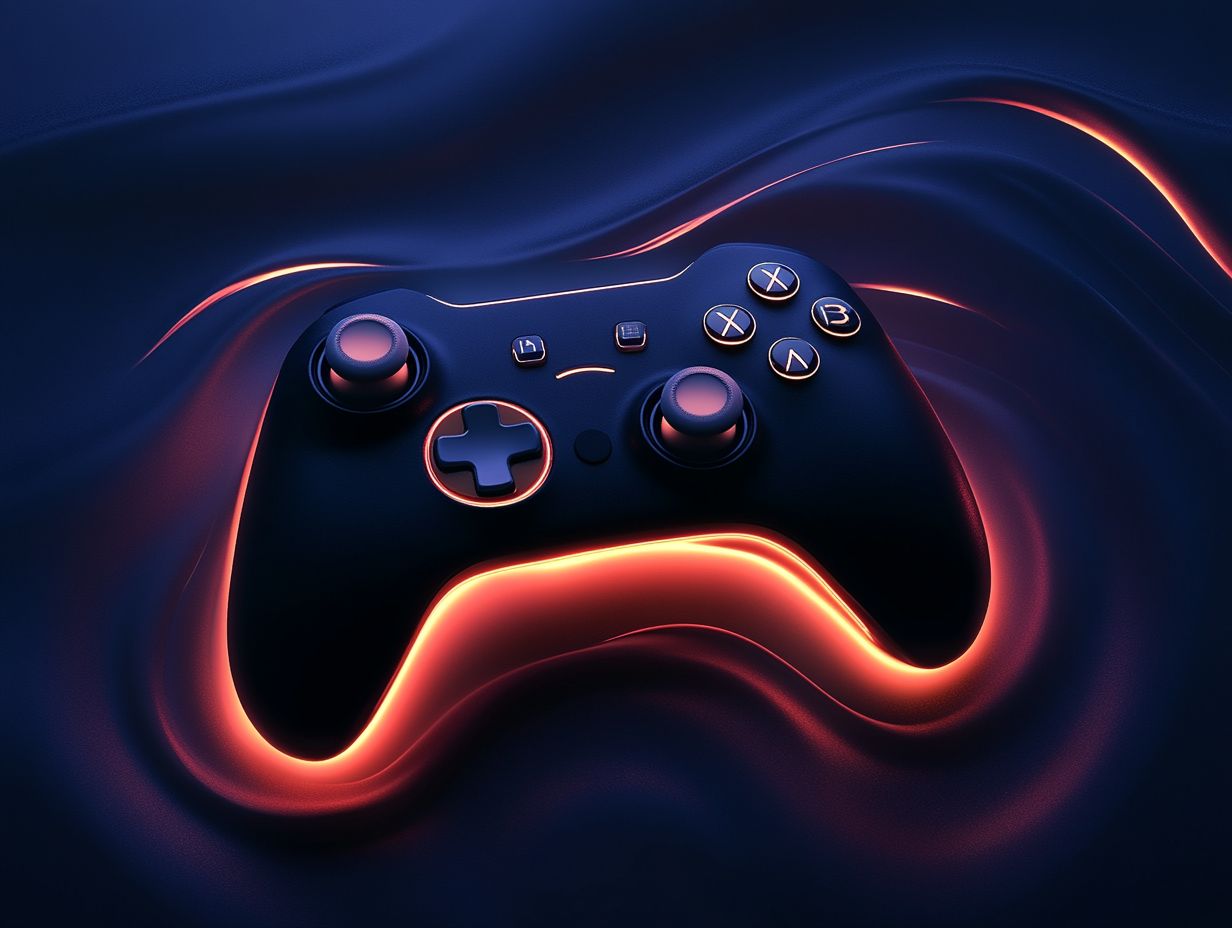
When designing gaming controllers, it s crucial to consider technology integration and user accessibility. Finding the right balance ensures that haptic sensations resonate with both seasoned gamers and those with varying sensory perceptions.
Thoughtful implementation enhances gameplay without overwhelming you. It s important to integrate adjustable feedback intensity and customizable settings, making it easier for players with disabilities to engage with different gameplay elements.
By prioritizing these aspects, we can create a more inviting gaming community, elevating user experience across a diverse audience.
Limitations and Challenges of Haptic Feedback in Gaming
While haptic feedback in gaming offers numerous benefits, several limitations and challenges require careful navigation by game developers. Addressing these challenges can enhance the effectiveness of haptic technology.
Addressing Potential Issues
Solving problems with haptic feedback is vital for elevating user experience and ensuring player satisfaction in gaming.
As a game developer, you often face specific challenges. Varying levels of player sensitivity to tactile sensations can lead to inconsistent experiences among users.
Inconsistencies in device compatibility also present significant hurdles, as not all controllers or platforms support advanced haptic functionalities.
To enhance effectiveness, consider exploring adaptive feedback technologies that tailor sensations based on individual player preferences and hardware capabilities.
Investing in research to standardize haptic standards across devices could open the door to innovative solutions, ultimately creating a more immersive gaming environment that resonates with every user.
The Future of Haptic Feedback in Gaming Controllers
Exciting advancements in haptic feedback are just around the corner, set to elevate your immersive gaming experience.
With innovative technologies and emerging industry trends, you can expect a level of sensory engagement that transforms how you interact with games, making every moment more impactful.
Predictions and Advancements
Predictions about the future of haptic feedback indicate that advancements will continue to redefine gaming controllers, ushering in even more immersive experiences for you as a gamer.
As technology evolves, look forward to sophisticated systems that deliver nuanced tactile sensations, fundamentally altering the way you engage with virtual environments.
Imagine innovations such as advanced motion sensors and pressure-responsive materials that allow you to feel every impact and environmental shift, deepening your connection to gameplay.
Industry experts suggest that upcoming gaming systems will focus on essential features like customizable feedback settings and integrated aroma emitters, enhancing your emotional engagement.
Ultimately, consumer expectations are shifting toward devices that not only react to your actions but also enrich narrative immersion, setting a new benchmark for what controllers can truly offer you.
Frequently Asked Questions
Curious about haptic feedback? Here s what you need to know!
What is the role of haptic feedback in gaming controllers?
Haptic feedback is a technology that provides physical sensations or vibrations to the user in response to an action or event in a gaming experience. In gaming controllers, haptic feedback enhances the overall gaming experience by adding a sense of touch to the visual and audio elements of gameplay.
How does haptic feedback work in gaming controllers?
Haptic feedback in gaming controllers is usually generated through small motors or actuators, which are small devices that create vibrations. These vibrations are synchronized with the on-screen action, creating a realistic and immersive experience for the player.
What are the benefits of haptic feedback in gaming controllers?
The use of haptic feedback in gaming controllers can provide a more immersive and realistic gaming experience by adding a sense of touch. It can also help improve player reaction time and enhance spatial awareness in games.
Can haptic feedback in gaming controllers improve gameplay?
Yes, haptic feedback can greatly enhance gameplay by providing physical cues and feedback to the player. This improves overall immersion and makes the game more engaging and interactive.
Are there different types of haptic feedback in gaming controllers?
Yes, there are different types of haptic feedback in gaming controllers, such as rumble, force feedback, and trigger resistance. These types can be used in combination or individually to create a more dynamic and realistic gaming experience.
Do all gaming controllers have haptic feedback?
No, not all gaming controllers have haptic feedback. It is a relatively new technology, and not all controllers are equipped with the necessary hardware. However, it is becoming increasingly common in newer and high-end gaming controllers.

